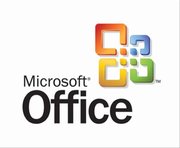 Mea Culpa. I am uncharacteristically late in commenting on the XML Wars of August, 2009, which have already received so much attention in the press and in the blogs of the technology world. The wars to which I refer, of course, broke out with the announcement early in the month that Microsoft had been granted an XML-related patent. The opening of that front gave rise to contentions that patenting anything to do with XML was, in effect, an anti-community effort to carve a piece out of a public commons and claim it as one's own.
Mea Culpa. I am uncharacteristically late in commenting on the XML Wars of August, 2009, which have already received so much attention in the press and in the blogs of the technology world. The wars to which I refer, of course, broke out with the announcement early in the month that Microsoft had been granted an XML-related patent. The opening of that front gave rise to contentions that patenting anything to do with XML was, in effect, an anti-community effort to carve a piece out of a public commons and claim it as one's own.
The second front opened when a small Canadian company, named i4i, won a stunning and unexpected remedy (note that I specifically said "remedy" and not "victory," on which more below) in an ongoing case before a judge in Texas, a jurisdiction beloved of patent owners for its staunch, Red State dedication to protecting property rights - including those of the intangible, intellectual kind.
So if this is war, why have I been so derelict in offering my comments, as quite a few people have emailed me to tell me they are waiting to hear? Here's why.
 In 2001, I took a one month solo cross country trip, driving from Massachusetts across the Northeast, the Midwest, and then the prairie states, until I reached what we generally think of as “the West” – the land of canyons and buttes, deserts and mesas. Once there, I spent the rest of the time backpacking in the canyonlands of Utah, and then meandering North on dirt roads until I reached Glacier National Park, in the Northwest corner of Montana. After that, I zigzagged back East until I reached the Mississippi. Then, it was just a straight highway shot till I arrived back home once again. It was during that trip that I began writing in earnest, although I haven’t (yet) posted anything from that journey to the Web.
In 2001, I took a one month solo cross country trip, driving from Massachusetts across the Northeast, the Midwest, and then the prairie states, until I reached what we generally think of as “the West” – the land of canyons and buttes, deserts and mesas. Once there, I spent the rest of the time backpacking in the canyonlands of Utah, and then meandering North on dirt roads until I reached Glacier National Park, in the Northwest corner of Montana. After that, I zigzagged back East until I reached the Mississippi. Then, it was just a straight highway shot till I arrived back home once again. It was during that trip that I began writing in earnest, although I haven’t (yet) posted anything from that journey to the Web.

 Last week, Microsoft and the European Commission each announced that Microsoft had proposed certain concessions in response to a "Statement of Objections" sent to Microsoft by the EC on January 15 of this year relating to Microsoft's bundling of Internet Explorer with Windows. If you've been reading the reams of articles that have been written since then, you may have noticed that the vast majority of the virtual ink spent on the story has been directed at the terms relating to browser choice. Typically, and as an afterthought, most of these stories have added a brief mention that Microsoft also proposed commitments relating to "another" dispute, this one relating to interoperability.
Last week, Microsoft and the European Commission each announced that Microsoft had proposed certain concessions in response to a "Statement of Objections" sent to Microsoft by the EC on January 15 of this year relating to Microsoft's bundling of Internet Explorer with Windows. If you've been reading the reams of articles that have been written since then, you may have noticed that the vast majority of the virtual ink spent on the story has been directed at the terms relating to browser choice. Typically, and as an afterthought, most of these stories have added a brief mention that Microsoft also proposed commitments relating to "another" dispute, this one relating to interoperability.
While the browser question is certainly important, in many ways it is far less important than the interoperability issue. After all - the primary benefit for consumers under the browser settlement is that they can choose their favorite browser when they first boot up their new computer, as compared to investing a few extra clicks to download it from the site of its developer - as they can already do now. Interoperability, of course, goes far deeper. There's no way that you can make one program work the way you really want it to with another unless it comes out of the box that way, or unless you have not only the ability, but also the proprietary information, to hack it yourself. And if both programs don't support the same standards, well, good luck with that.
So what exactly did Microsoft promise to the EC, regarding interoperability? Let's use ODF as a reference point and see.
I'm pleased to report this morning on the formation of a new advocacy group for the use of free and open source software in the U.S. Government. I'm also pleased to have been asked to serve on its Board of Advisors, along other proponents of free and open source software, such as Roger Burkhard, Dawn Meyerriecks, Eben Moglen, Tim O'Reilly, Simon Phipps, Mark Shuttleworth, Michael Tiemann, Bill Vass, and Jim Zemlin.
The new organization is called Open Source for America (OSA), and you can find its Web site here. Tim O'Reilly will officially announce OAS at OSCON later today, and you can find the launch press release here, as well as pasted in at the end of this blog post for archival purposes. I'm sure that you'll also see quite a few articles blossom across the Web today relating to its announcement, but having been in on the planning, here's what it's all about.
 The dominance of Microsoft's Office in the marketplace would be logical (if frustrating, to those that think that competition breeds better products), if it was simply a matter of developer seats. After all, Microsoft deployed hundreds, and then thousands of engineers to develop and evolve its flagship app over the last 25 years. How could anyone expect a less well funded commercial competitor, much less an open source project, to equal Office for features, performance and interoperability with other office suites?
The dominance of Microsoft's Office in the marketplace would be logical (if frustrating, to those that think that competition breeds better products), if it was simply a matter of developer seats. After all, Microsoft deployed hundreds, and then thousands of engineers to develop and evolve its flagship app over the last 25 years. How could anyone expect a less well funded commercial competitor, much less an open source project, to equal Office for features, performance and interoperability with other office suites?
At the same time, people keep trying - a lot of them. Not just long-established competitors, like Corel, with the venerable and estimable WordPerfect office suite it bought from Novell, open source projects like OpenOffice and KOffice, as well as projects launched by much larger players, such as IBM (Lotus Symphony) and Google (Docs).
WordPerfect aside, most of these offerings disappoint when it comes to round tripping documents with Office users, although many provide perfectly fine alternatives for stand-alone use, particularly by those that don't need to create the most complex business document.
The funny thing is, though, that the quality of the result, and even the ability to interoperate in a world dominated by Microsoft's Office, doesn't necessarily equate to the depth of the resources of the developer. Now isn't that an interesting observation?
Why did perennial litigant Rambus, Inc. settle with the European Commission?
 Certainly the most watched standards-related legal conflict of the decade involves the participation of memory technology vendor Rambus, Inc. in a working group hosted by standards developer Joint Electron Device Engineering Council (JEDEC) in the early 1990s. The fame (or notoriety) of the conflict arises in part from the importance of the conduct at issue (did Rambus set a "patent trap" for implementers of the standard that emerged from the working group?), and in part from the seemingly endless string of law suits that resulted from that conduct some fifteen years ago.
Certainly the most watched standards-related legal conflict of the decade involves the participation of memory technology vendor Rambus, Inc. in a working group hosted by standards developer Joint Electron Device Engineering Council (JEDEC) in the early 1990s. The fame (or notoriety) of the conflict arises in part from the importance of the conduct at issue (did Rambus set a "patent trap" for implementers of the standard that emerged from the working group?), and in part from the seemingly endless string of law suits that resulted from that conduct some fifteen years ago.
Most of these suits were brought by Rambus against vendors that refused to pay royalties when they implemented the standard, but these suits almost always resulted in vigorous counterclaims against Rambus, brought by those same implementers. And investigations into Rambus's conduct were also brought by both the Federal Trade Commission (FTC) in the United States, and by the European Commission in Europe. A separate string of cases related to alleged price fixing and other improper conduct by other vendors that participated in the same working group, which ended in record settlement amounts being paid by those vendors to the regulators.
 If you haven't heard the words "smart grid" before, that's likely to change soon. That's especially so if you live in the U.S., where billions of dollars in incentive spending is pouring into making the smart grid a reality. As you might expect, since I'm talking about it here, the smart grid will rely on standards to become real. A whole lot of standards, in fact, and that's a problem
If you haven't heard the words "smart grid" before, that's likely to change soon. That's especially so if you live in the U.S., where billions of dollars in incentive spending is pouring into making the smart grid a reality. As you might expect, since I'm talking about it here, the smart grid will rely on standards to become real. A whole lot of standards, in fact, and that's a problem
Those of you who are subscribers to my free standards eJournal Standards Today know that I've dedicated each of the last several issues to one of the many multi-billion dollar initiatives that the Obama Administration has launched that are heavily dependent on standards - which in many cases do not yet exist. Each initiative is also of great complexity, and will need to rely on a level of cooperation and collaboration that does not natively exist in the marketplace. That's certainly the case with the Smart Grid challenge, and that's what the latest issue of Standards Today is all about.
Throughout the 20th century, the U.S. electric power delivery infrastructure served our nation well,… This once state-of-the-art system brought a level of prosperity to the United States unmatched by any other nation in the world. But a 21st-century U.S. economy cannot be built on a 20th-century electric grid.
A Vision for the Modern Grid, National Energy Technology Laboratory, for the DOE, March 2007
For decades utility companies and environmentalists alike have known that more dramatic and economical advances in energy policy could be achieved through energy conservation than by any other means. By utilizing techniques as simple as buying more efficient appliances and better insulating our homes we can lower our dependence on foreign oil, release fewer greenhouse gases, and savemoney as well, all at the same time. For almost as long, utilities have promoted the concept of “demand side management,” and sought to enlist the aid of consumers and businesses to shift electricity usage to low-demand times of the day, with the potential benefit of avoiding the need to build expensive new power plants.
 Before Linux.com went dark late last year, it was one of the most visited open source news aggregation and discussion sites. As you may recall, word got this March that the Linux Foundation had taken Linux.com over, and was committed to making it bigger, better and richer than before. Further to that goal, it set up "Ideaforge," to tap the developer and user communities to learn what they in an on-line resource to make the Linux ecosystem more successful and satisfying for all involved.
Before Linux.com went dark late last year, it was one of the most visited open source news aggregation and discussion sites. As you may recall, word got this March that the Linux Foundation had taken Linux.com over, and was committed to making it bigger, better and richer than before. Further to that goal, it set up "Ideaforge," to tap the developer and user communities to learn what they in an on-line resource to make the Linux ecosystem more successful and satisfying for all involved.
After months of effort behind the scenes, and some pretty impressive Web design, the Linux Foundation delivered on that promise last night. What you'll find there is something that's different from anything that's ever existed before - an interactive, growing, feature and content rich resource that can help you hone your skills, find a job, assemble a Linux-based system, and, of course, access the most up to date news, blogs and ideas about open source software in general, and Linux in particular. What it's all about can be summed up in just six words: For the community, by the community. And if you read this blog, that includes you.
 It was an interesting trip, in all, providing a cascade of often starkly diverse images. How varied a range? On the natural grandeur list, I would add spectacular sunsets, wildernesses of soaring, broken redrock, and broad vistas of pristine desert.
And at the opposite end of the spectrum, I might begin with the sights that greeted me when I crossed the Colorado early in the trip, and threaded my way through the 27th Annual Laughlin River Run, a meet that draws over 40,000 leather-clad, mostly aging bikers to what Motorcycle-usa.com calls, “one of the more popular events on the West Coast rally scene, packing bikini contests, custom bike shows, demo rides, poker runs, freak shows and tattoo contests into four-days of 24/7 fun.” I can attest to the fact that it also packs in what is presumably one of the largest assemblages of multi-story, inflatable Jim Beam bottle and Budweiser can replicas to be found anywhere in one place.
It was an interesting trip, in all, providing a cascade of often starkly diverse images. How varied a range? On the natural grandeur list, I would add spectacular sunsets, wildernesses of soaring, broken redrock, and broad vistas of pristine desert.
And at the opposite end of the spectrum, I might begin with the sights that greeted me when I crossed the Colorado early in the trip, and threaded my way through the 27th Annual Laughlin River Run, a meet that draws over 40,000 leather-clad, mostly aging bikers to what Motorcycle-usa.com calls, “one of the more popular events on the West Coast rally scene, packing bikini contests, custom bike shows, demo rides, poker runs, freak shows and tattoo contests into four-days of 24/7 fun.” I can attest to the fact that it also packs in what is presumably one of the largest assemblages of multi-story, inflatable Jim Beam bottle and Budweiser can replicas to be found anywhere in one place.
 Mea Culpa. I am uncharacteristically late in commenting on the XML Wars of August, 2009, which have already received so much attention in the press and in the blogs of the technology world. The wars to which I refer, of course, broke out with the announcement early in the month that Microsoft had been granted an XML-related patent. The opening of that front gave rise to contentions that patenting anything to do with XML was, in effect, an anti-community effort to carve a piece out of a public commons and claim it as one's own.
Mea Culpa. I am uncharacteristically late in commenting on the XML Wars of August, 2009, which have already received so much attention in the press and in the blogs of the technology world. The wars to which I refer, of course, broke out with the announcement early in the month that Microsoft had been granted an XML-related patent. The opening of that front gave rise to contentions that patenting anything to do with XML was, in effect, an anti-community effort to carve a piece out of a public commons and claim it as one's own. In 2001, I took a one month solo cross country trip, driving from
In 2001, I took a one month solo cross country trip, driving from 
 Last week, Microsoft and the European Commission each announced that Microsoft had proposed certain concessions in response to a "Statement of Objections" sent to Microsoft by the EC on
Last week, Microsoft and the European Commission each announced that Microsoft had proposed certain concessions in response to a "Statement of Objections" sent to Microsoft by the EC on 
 Certainly the most watched standards-related legal conflict of the decade
Certainly the most watched standards-related legal conflict of the decade If you haven't heard the words "smart grid" before, that's likely to change soon. That's especially so if you live in the U.S., where billions of dollars in incentive spending is pouring into making the smart grid a reality. As you might expect, since I'm talking about it here, the smart grid will rely on standards to become real. A whole lot of standards
If you haven't heard the words "smart grid" before, that's likely to change soon. That's especially so if you live in the U.S., where billions of dollars in incentive spending is pouring into making the smart grid a reality. As you might expect, since I'm talking about it here, the smart grid will rely on standards to become real. A whole lot of standards Before Linux.com went dark late last year, it was one of the most visited open source news aggregation and discussion sites. As you may recall, word got this March that the Linux Foundation had
Before Linux.com went dark late last year, it was one of the most visited open source news aggregation and discussion sites. As you may recall, word got this March that the Linux Foundation had  It was an interesting trip, in all, providing a cascade of often starkly diverse images. How varied a range? On the natural grandeur list, I would add spectacular sunsets, wildernesses of soaring, broken redrock, and broad vistas of pristine desert.
And at the opposite end of the spectrum, I might begin with the sights that greeted me when I crossed the Colorado early in the trip, and threaded my way through the 27th Annual Laughlin River Run, a meet that draws over 40,000 leather-clad, mostly aging bikers to what
It was an interesting trip, in all, providing a cascade of often starkly diverse images. How varied a range? On the natural grandeur list, I would add spectacular sunsets, wildernesses of soaring, broken redrock, and broad vistas of pristine desert.
And at the opposite end of the spectrum, I might begin with the sights that greeted me when I crossed the Colorado early in the trip, and threaded my way through the 27th Annual Laughlin River Run, a meet that draws over 40,000 leather-clad, mostly aging bikers to what